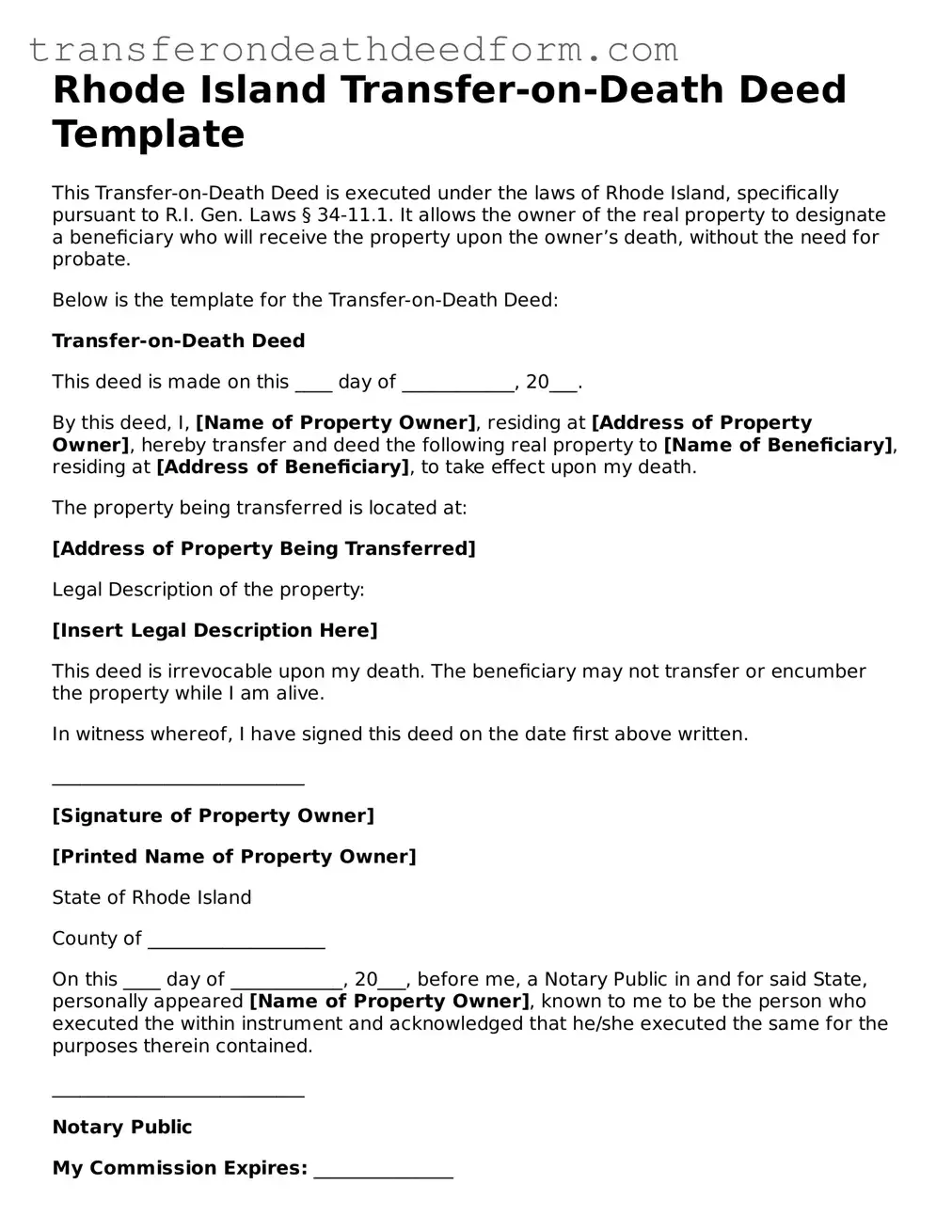Rhode Island Transfer-on-Death Deed Template
This Transfer-on-Death Deed is executed under the laws of Rhode Island, specifically pursuant to R.I. Gen. Laws § 34-11.1. It allows the owner of the real property to designate a beneficiary who will receive the property upon the owner’s death, without the need for probate.
Below is the template for the Transfer-on-Death Deed:
Transfer-on-Death Deed
This deed is made on this ____ day of ____________, 20___.
By this deed, I, [Name of Property Owner], residing at [Address of Property Owner], hereby transfer and deed the following real property to [Name of Beneficiary], residing at [Address of Beneficiary], to take effect upon my death.
The property being transferred is located at:
[Address of Property Being Transferred]
Legal Description of the property:
[Insert Legal Description Here]
This deed is irrevocable upon my death. The beneficiary may not transfer or encumber the property while I am alive.
In witness whereof, I have signed this deed on the date first above written.
___________________________
[Signature of Property Owner]
[Printed Name of Property Owner]
State of Rhode Island
County of ___________________
On this ____ day of ____________, 20___, before me, a Notary Public in and for said State, personally appeared [Name of Property Owner], known to me to be the person who executed the within instrument and acknowledged that he/she executed the same for the purposes therein contained.
___________________________
Notary Public
My Commission Expires: _______________
